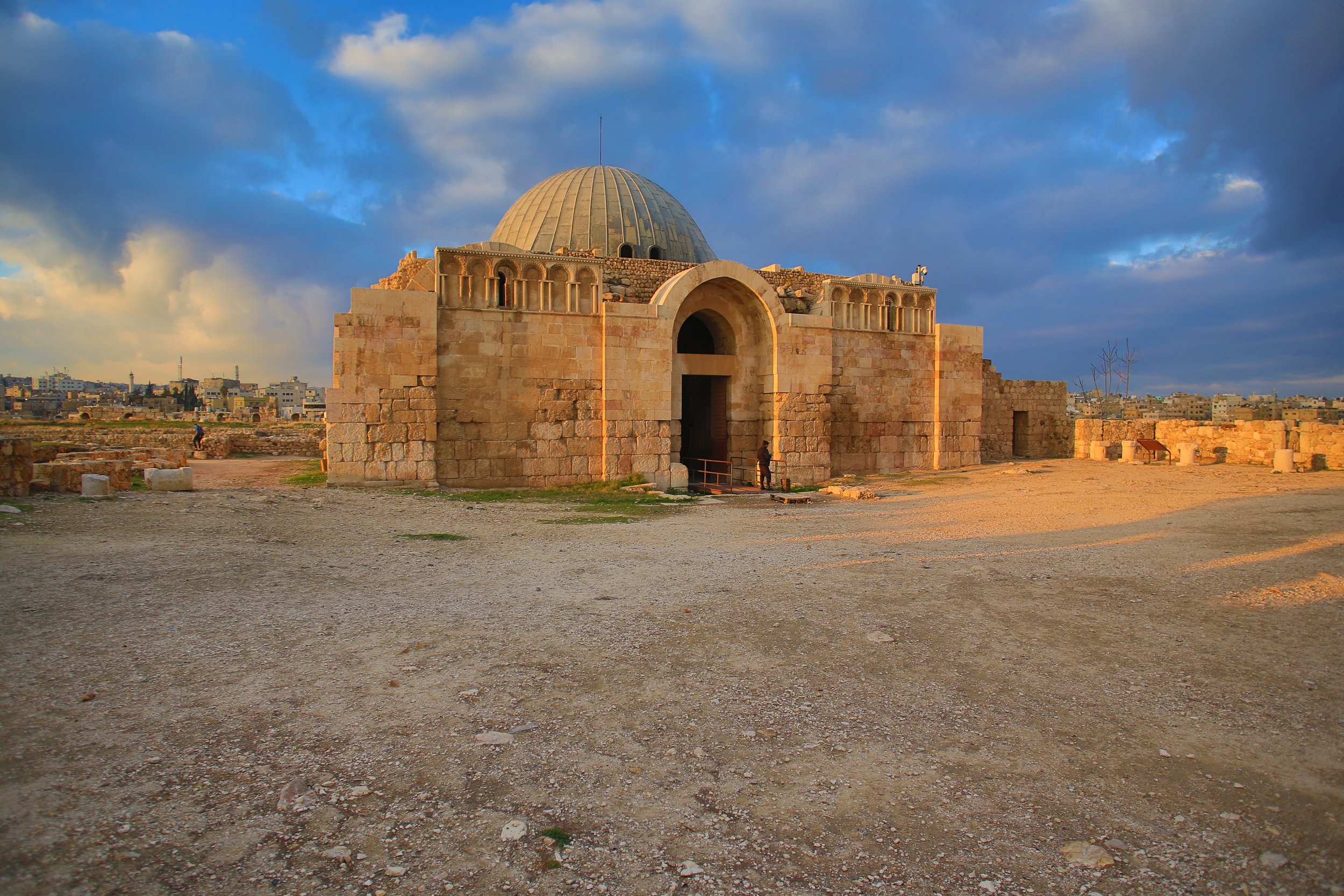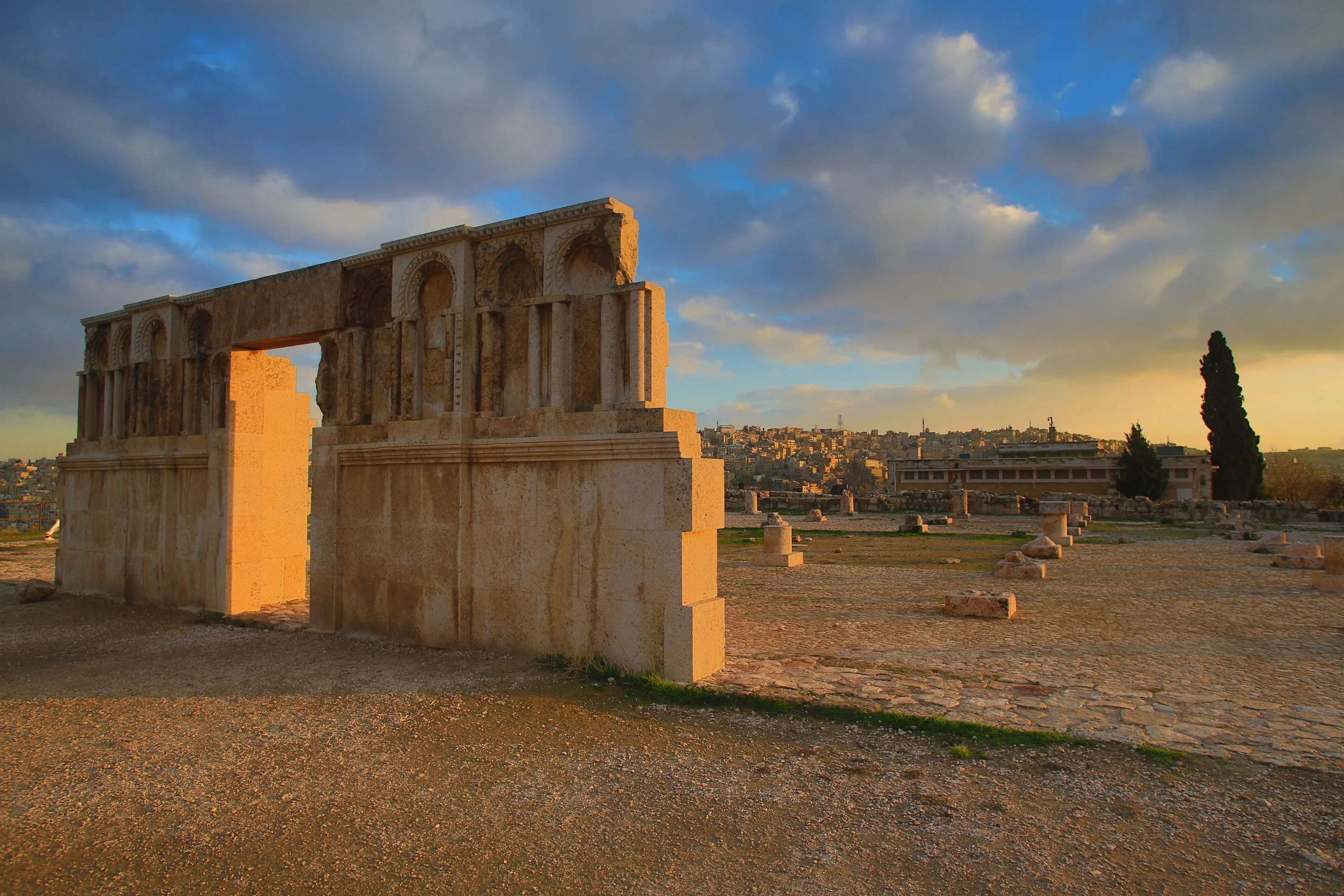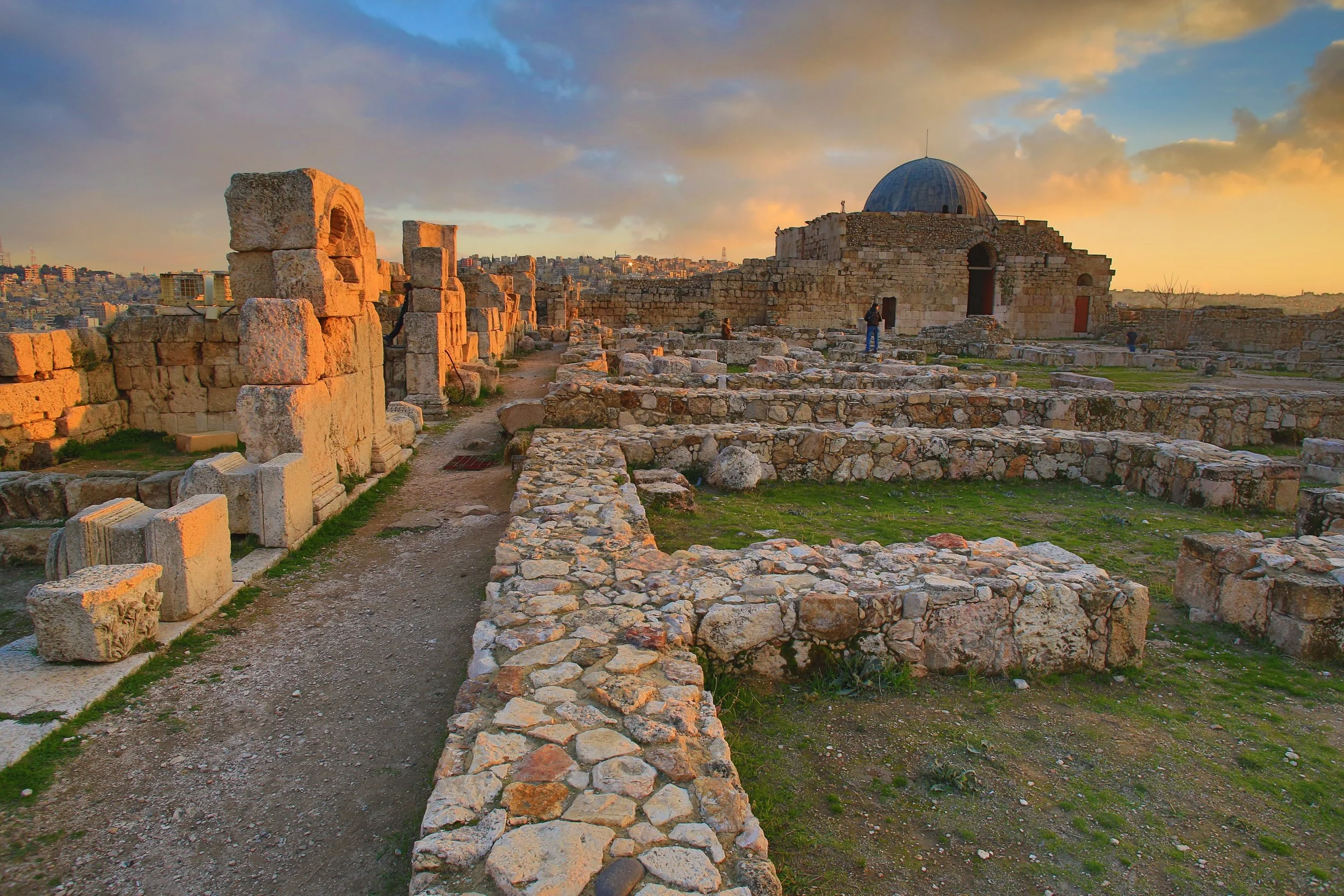Philadelphia
Centuries ago, the city of Amman was known as Philadelphia, one of the many Roman cities outside of Italy but key parts of the Roman Empire. Much like Rome herself, Philadelphia was built on seven hills.
Sights & Culture
Amman Citadel
Centuries ago, the city of Amman was known as Philadelphia, one of the many Roman cities outside of Italy but key parts of the Roman Empire. Much like Rome herself, Philadelphia was built on seven hills. The Citadel ruins are on one of them looking over the Roman Theatre and Hashemite plaza in the basin.
Bronze Age Cave
Tucked away near the ruins, a cave used during the iron age as a home can be explored. The roof is still black from the generations of fires. An exit in the stone gives a small roofless ‘outside’ space.
It is surprising to realise how often the places humans make home persist for thousands of years, building on top of themselves, recreating their histories.
Temple of Hercules
Perhaps the most well known and striking part of the citadel is the temple of Heracles (Hercules). Tall Roman columns remain and so does the large hand of Hercules, though the rest of the statue is missing and it lies prone on the ground.
The statue is of heroic proportions and you can only imagine how it might have looked when it was whole, the temple dominating the skyline.
Umayyad Ruins
Part of the Amman Citadel, but a later development, the Umayyad ruins are a series of islamic buildings, including a gateway, market square and palace as well as the remains of a mosque.
Umayyad Market Square
Past the Temple, there you reach the Umayyad area, first is the market square. As you’d expect a market square has little additional features other than being a square.
Umayyad Monumental Gateway
Behind the square, there is the gateway. Part of the ruins of an 8th-century palace complex, with a grand dome. When you pass through there is the palace overlooking another of the hills of Amman.
Inside, it is geometrically decorated with tall domed ceilings. Whilst small, it remains ornate.
Umayyad Mosque
The mosque stands at the highest point of the citadel. Little but a single wall remains, a stark outline of what used to be. Jordan is unusual in its history spanning the ancient civilisations like the Nabateans, the Romans the Christians and now Islam, all leaving their mark on the landscape and the people.
Umayyad Palace
Through the gateway, the remains of the palace structure can be explored. One side backs straight onto the edge of the hill and overlooks Amman and the huge flag that marks the previous kings residence. The other looks west giving views of sunset. Some walls remain, mostly a foot or so above the ground, but a few are still standing tall.
The Hashemite Plaza
In the basin of Amman, not far from downtown is the Hashemite Plaza, where you can find the Roman Theatre and Odeon and a pair of small museums. There is a small ticket office to buy a ticket for both the Theatre and the Odeon (the museum are part of the Theatre structure.
The plaza is filled with Jordanians hanging out, meeting friends and a few selling various things from blankets. With the theatre standing above it, it shows how much the city lives with its past and it has become part of its present. In that vein it is a lot like Split in Croatia.
Roman Theatre
It is almost impossible to miss the Roman Theatre, it is visible even from the citadel. It is in remarkably good condition. You enter through a door behind the stage and walk almost immediately to stand on the stage facing the rows of seating rising above you.
You can easily feel how it would have been to address the crowds, stood on the stone stage.
Roman Odeon
Adjacent to the Theatre is the smaller odeon, seating five hundred people. Similar in style to the Theatre it offers a more intimate atmosphere.
Roman Nymphaeum Amman
A short walk from the Hashemite Plaza is the Roman Nymphaeum, similar to the one in Jerash. Currently being excavated and protected on all sides by an iron fence, it is a further example of how seriously Jordan takes its historic legacy, and the opportunities it gives for archeology and tourism.
Museums & Galleries
The Folklore Museum & Way of Life Museum
Taking identical positions on either side of the stage, using the rooms that would have been the theatre wings, the Folklore museum and the Way of Life museum. Some weaponry, clothing and mosaics line the walls, and small dioramas illustrate ways of life from the historic to the modern through. Alone they are not particularly fascinating, but as twin parts of the Roman Theatre, they give a practical context to its changing role over the years.
Archeology Museum
Tucked away in a small building is an archaeology museum. One room, but cluttered with items, the most important have been moved to the Jordan Museum in Amman, but there are a great many artefacts from Jordans varied history, including unusual coffins, a tablet detailing the war between the Israelites and Nabatean kings and the alleged oldest statue of a human ever found.












